MARIANI’S
Virtual Gourmet
AUGUST
14, 2016
NEWSLETTER
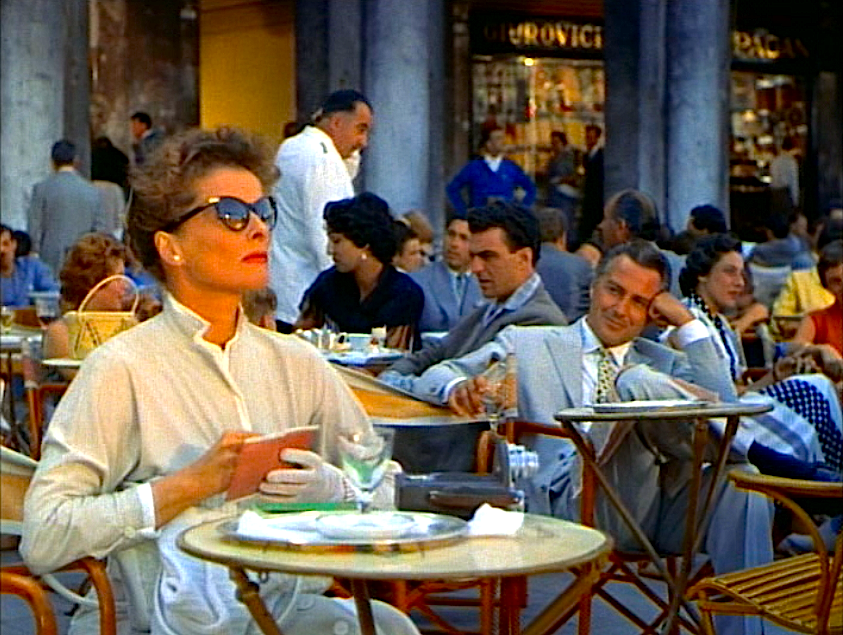
❖❖❖
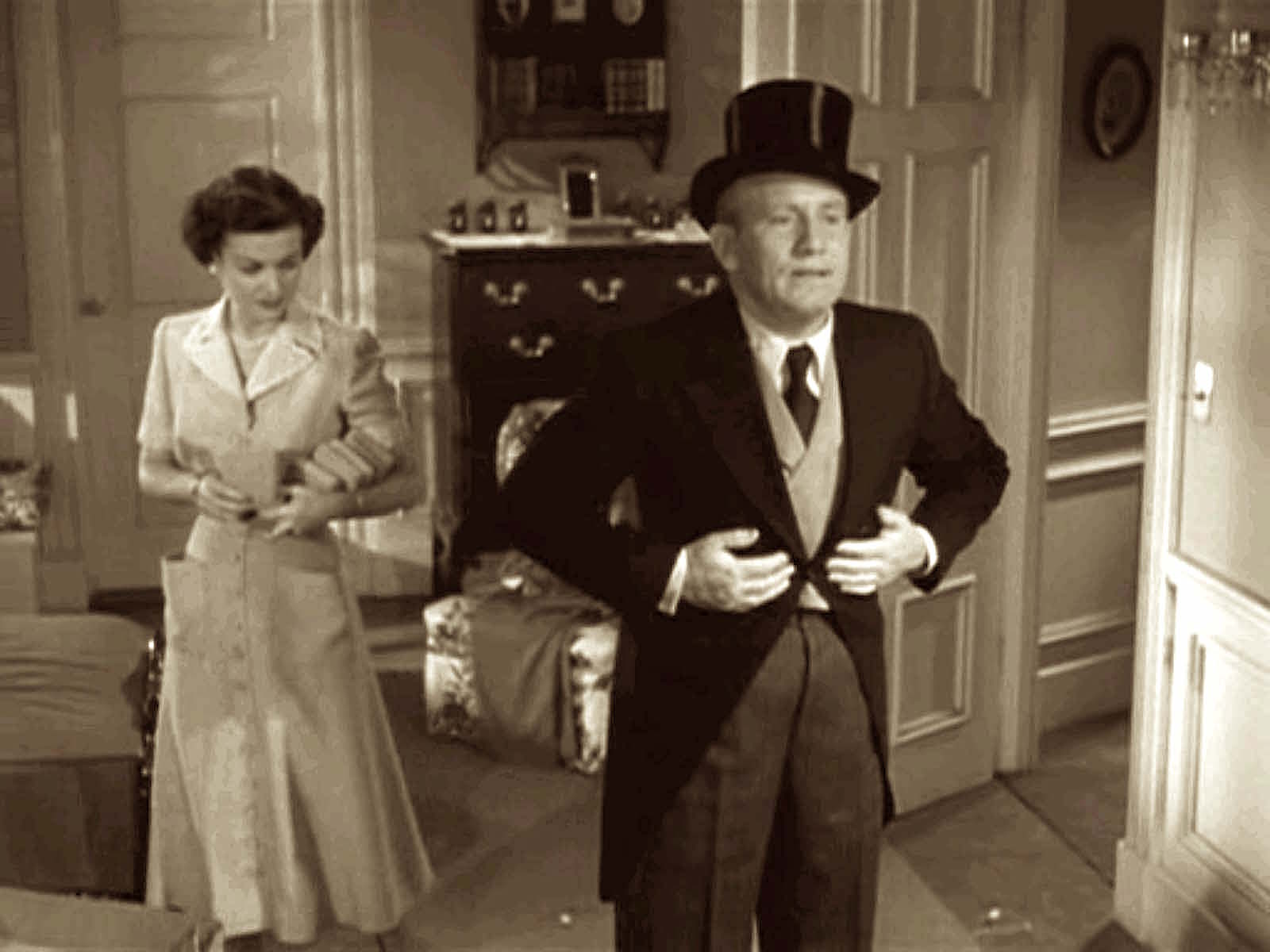
ANNOUNCEMENT: There will be no issue of Mariani's Virtual Gourmet next week, Aug. 21, because Mariani's younger son is getting married on Aug. 20! The next issue will appear Aug. 28.
❖❖❖
IN THIS ISSUE
TO LIVE AND DINE IN L.A.
By John A. Curtas
EVERY INCH THE CHEF,
MICHEL RICHARD DIES AT 68
By John Mariani
NEW YORK CORNER
MAMO
By John Mariani
NOTES FROM THE WINE CELLAR
MARYHILL WINERY OF WASHINGTON STATE
By John Mariani
❖❖❖
TO LIVE AND DINE IN L.A.
By John A. Curtas
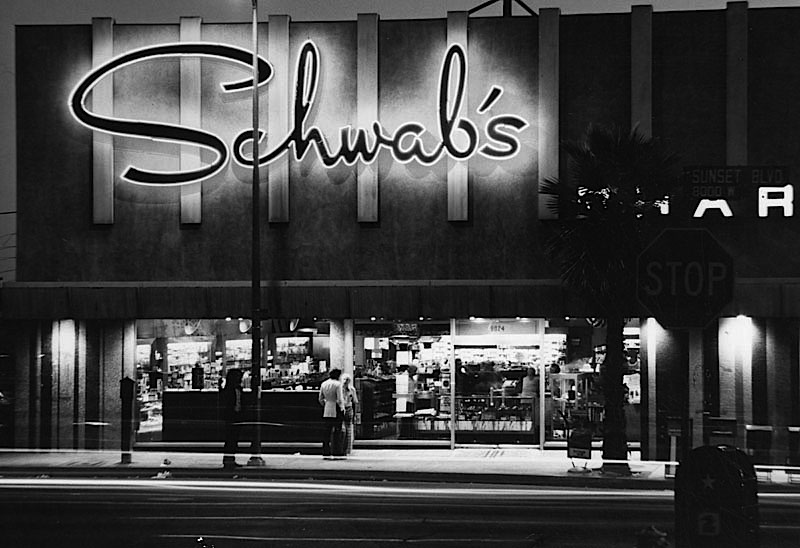
Schwab's
Pharmacy, 8024 Sunset Boulevard, Los
Angeles. Closed 1983
I'm
still in a bit of shock from my long weekend in
Los Angeles last month. Shock from the mediocre
meals I had. 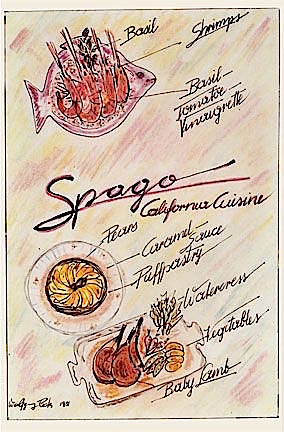 Shock from how I was
sold a bill of goods describing how a "downtown
Renaissance" was going on there. Something is
going on all right -- every block seems beset by
either new construction or a condo conversion --
but the progress has been glacial since last we
visited a few years ago, and don't hold your
breath if you expect it to look like mid-town
Manhattan or even downtown Seattle anytime soon.
Shock from how I was
sold a bill of goods describing how a "downtown
Renaissance" was going on there. Something is
going on all right -- every block seems beset by
either new construction or a condo conversion --
but the progress has been glacial since last we
visited a few years ago, and don't hold your
breath if you expect it to look like mid-town
Manhattan or even downtown Seattle anytime soon.
I've been visiting Los
Angeles, and by L.A. we mean downtown proper as
well as Santa Monica, Hollywood, West Hollywood,
Beverly Hills and the beach towns, on a
semi-regular basis since 1982. I've been eating in
Wolfgang Puck's restaurants since then, first at Spago,
then at Chinois 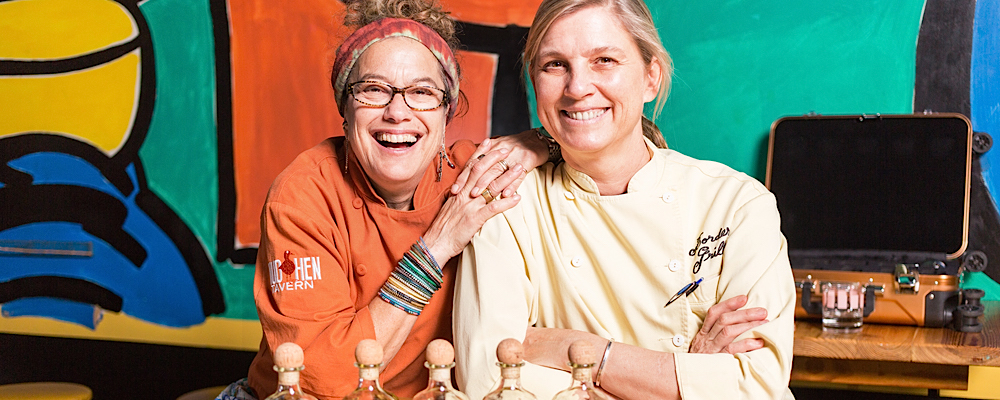 on Main,
Granité in Malibu straight through to the opening
of CUT in
Beverly Hills a decade ago, and also at the Too
Hot Tamales'--Susan Feniger and Mary Sue Milliken
(right)--restaurants
since 1991, when
we first heard of their Cal-Latin-American-fusion
breakthrough cuisine at CITY.
on Main,
Granité in Malibu straight through to the opening
of CUT in
Beverly Hills a decade ago, and also at the Too
Hot Tamales'--Susan Feniger and Mary Sue Milliken
(right)--restaurants
since 1991, when
we first heard of their Cal-Latin-American-fusion
breakthrough cuisine at CITY.
I’m still a huge fan of
everything from the Grand Central
Market , opened in 1917, to the Original Farmer's
Market that debuted in 1934
(below),and
usually
don't leave without whipping by Koreatown for some
dolsot
bimbimbap, or Langer's for a few pounds of
pastrami to sustain us on our way home. I remember
when Mark Peel and 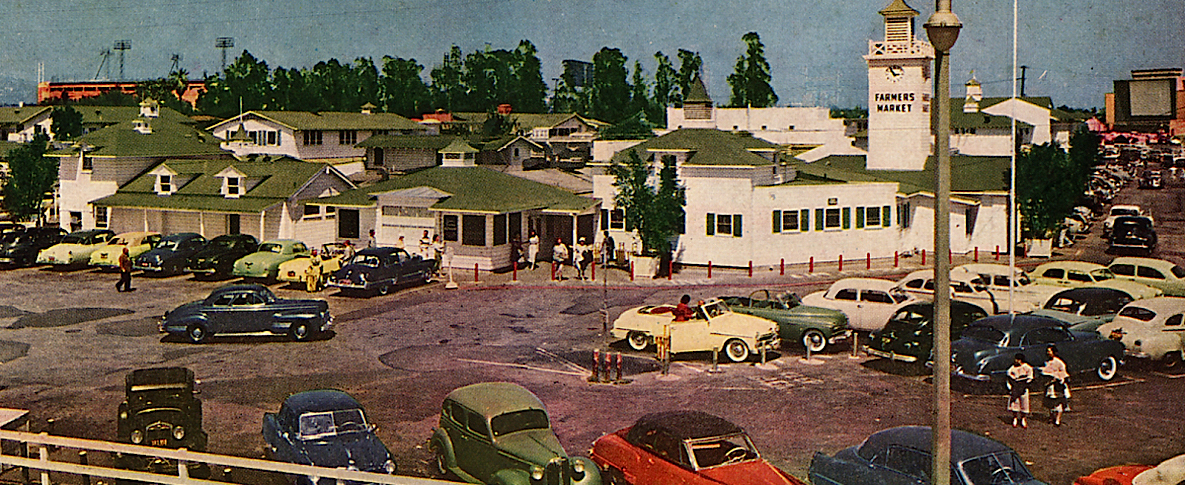 Nancy Silverton set the baking world
on fire with Campanile in the late 90s, and I was
wolfing down Monterey Park dim sum and packing Pink's Hot Dogs
(1939) for the four hour drive back to Las Vegas,
decades before anyone heard of Yelp, or thought
about photographing their food.
Nancy Silverton set the baking world
on fire with Campanile in the late 90s, and I was
wolfing down Monterey Park dim sum and packing Pink's Hot Dogs
(1939) for the four hour drive back to Las Vegas,
decades before anyone heard of Yelp, or thought
about photographing their food.
One thing that did not
disappoint on my recent trip was the Ace Hotel on
South Broadway, just around the block from the
Staples Center. The Ace is hipster central in
these parts:
creative hatwear was in full bloom on the
weekend we stayed, but the simple, DIY-vibe and environmentally-friendly
rooms were well-appointed, comfortable,
and the perfect expression of the modern, urban
hotel.
Good luck finding a decent
place to eat at this end of downtown, however.
Aside from the always-open Original
Pantry Café (1924), an Umami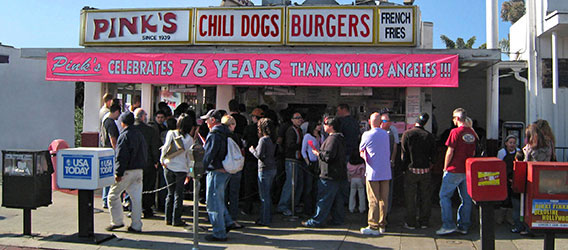 Burger outlet, and the huge and
wildly popular Bottega Louie
(nice décor, good French pastries, boring
Italian menu), you can look forward to block after
long city block of urban nothingness. Connoisseurs
of bombed out buildings and thrift shops will be
in hog heaven; hungry people will not.
Burger outlet, and the huge and
wildly popular Bottega Louie
(nice décor, good French pastries, boring
Italian menu), you can look forward to block after
long city block of urban nothingness. Connoisseurs
of bombed out buildings and thrift shops will be
in hog heaven; hungry people will not.
And
hungry you will be, but food you will not find for
blocks on end. When you do find it, in the form of
two new, celebrated joints at the north end of
town, expect to be underwhelmed. My
first meal took place at the recently opened Otium
adjacent to the also just opened Broad (pronounced
"Brode") Museum. Both the museum and the
restaurant are housed in spectacular structures (below). The
difference is, things get better when you step
inside the Broad and experience its eclectic and
interesting collection) but worse once you plunge
into Otium's food, which is anything but. Is Otium
odious? Not really, but it is derivative and
predictable.
The brunch menu lists every cliché in the
book, from smoked salmon to duck hash to kale and
quinoa, all of it serviceable, none of it inspired
enough to merit a return visit.
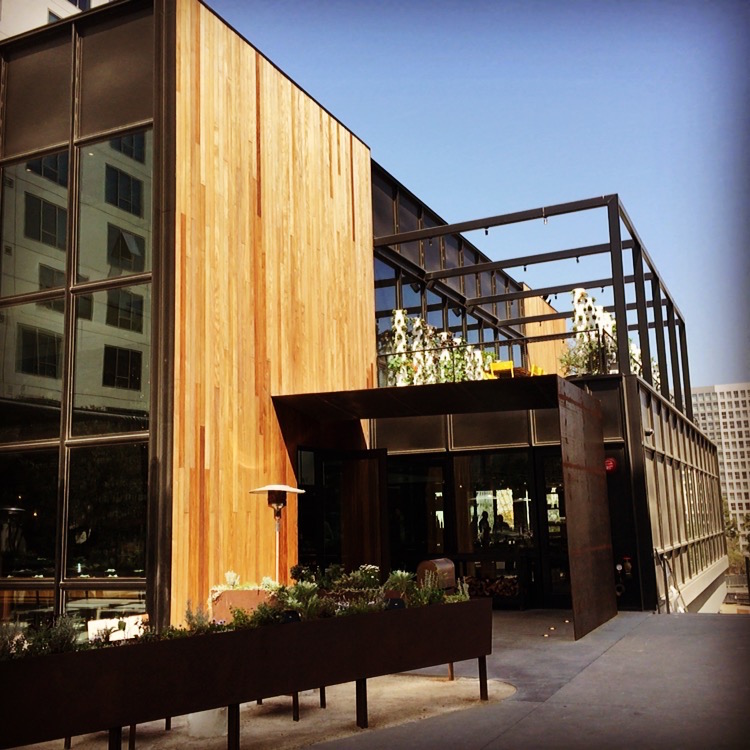 The question needs to
be asked: Is this what they're teaching in
culinary school these days? Or does all of this
food get cooked in some industrial kitchen in
Brooklyn, ready to be shipped out in Sous-vide
bags to every so-called gastropub-y restaurant in
the country? As soon as I saw the menu, riven with
such Millennial-safe selections as "country
ciabatta" and avocado toast, I wanted to hit the
exits. But our dining companions had traveled some
distance to meet me there, so stuck I was. None of
the food at Otium is as good as it should be but
seems just fine for the aging culture vultures and
Yelpers who want to believe they're having an
eating experience to match the art next door.
The question needs to
be asked: Is this what they're teaching in
culinary school these days? Or does all of this
food get cooked in some industrial kitchen in
Brooklyn, ready to be shipped out in Sous-vide
bags to every so-called gastropub-y restaurant in
the country? As soon as I saw the menu, riven with
such Millennial-safe selections as "country
ciabatta" and avocado toast, I wanted to hit the
exits. But our dining companions had traveled some
distance to meet me there, so stuck I was. None of
the food at Otium is as good as it should be but
seems just fine for the aging culture vultures and
Yelpers who want to believe they're having an
eating experience to match the art next door.
Our small plate array of cured
hamachi, barely smoked salmon, Hangtown Fry, jerk
chicken, crispy potatoes, and the aforementioned
avocado toast, did their job in sating our
appetites, but weren't anything we haven't been
eating in Las Vegas for years now and in SoCal for
decades. Then we saw the dinner menu--Big Eye Tuna
(below)!
Agnolotti! Whipped Lardo! Smoked Tofu! Smoked
Everything!--and realized Otium was as much a
something-for-everyone operation as a Cheesecake
Factory.
On the plus side, Wine Director
Elizabeth Heuttinger's list is everything the food
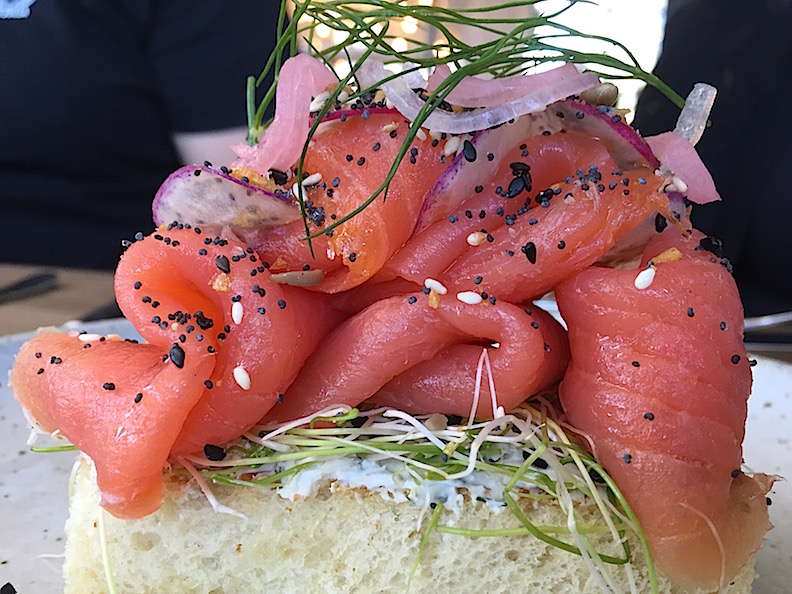 is not: personal,
thoughtful, and pleasantly off-beat. Reading it
alongside the menu felt like listening to a be-bop
jazz riff while digesting bubble gum pablum.
is not: personal,
thoughtful, and pleasantly off-beat. Reading it
alongside the menu felt like listening to a be-bop
jazz riff while digesting bubble gum pablum.
But you can't judge a food
scene based upon one brunch, which is why we
walked about a half mile down the hill to Redbird
(below)
for dinner, located
in a culinary No Man's Land, which might explain
all the praise the local press has lavished upon
them. But if any food writers looked up from their
wishful thinking and star gazing (“Was that Vince
Vaughn? “ “I heard J-Lo loves this place!”), they
might notice that chicken pot pie, day boat
scallops and cavatelli
are about as original as a Charlie Sheen
sitcom.
Pan-fried soft shell crab
paired with asparagus mint, Thai basil and red
curry sounded somewhat original, but
those advertised accents were notable mainly by
their dullness. Hopes were raised again by some
house-made porchetta
di testa, that was every bit as toothsome as
it was attractive.
Sadly, it turned out, that headcheese was
the highlight of the meal. 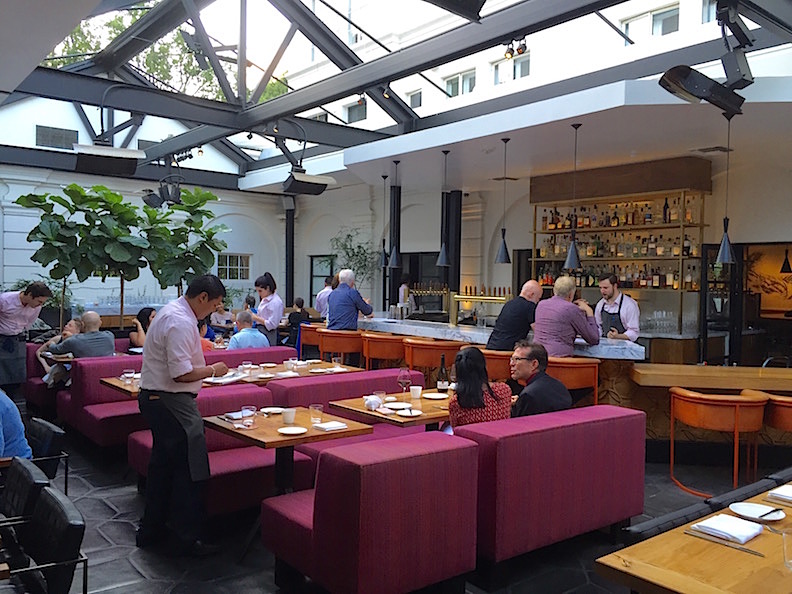 We opted for the $76
suckling pig over the $96 veal chop, and what
appeared was a dried-out hip joint, finished in a
deep fryer, pocked with scorch marks, each bite
after bland bite a blackened bit of circumstantial
evidence indicting
the kitchen for biting off more than it
could chew. The advertised "molé amarillo sauce"
was distinguished mainly by its ability to appear
on the plate but not register on the palate. Some
vertical dessert-in-a-jar thing they threw at us
was a disaster and could've come straight from a
Hof's Hut.
We opted for the $76
suckling pig over the $96 veal chop, and what
appeared was a dried-out hip joint, finished in a
deep fryer, pocked with scorch marks, each bite
after bland bite a blackened bit of circumstantial
evidence indicting
the kitchen for biting off more than it
could chew. The advertised "molé amarillo sauce"
was distinguished mainly by its ability to appear
on the plate but not register on the palate. Some
vertical dessert-in-a-jar thing they threw at us
was a disaster and could've come straight from a
Hof's Hut.
The
whole point of Redbird appears to be elevating
classics like rack of lamb, scallops and "Aged
Liberty Farms" duck by surrounding them with
seasonal produce and cross-cultural accents. In
other words, what Spago was doing in 1992.
After these disappointments at
a two "modern" restaurants, we decided to go old
school for our last dinner in town, and traipsed
over to Santa Monica for a visit with old friend
Piero Selvaggio (below) at
Valentino.
Selvaggio may be one of the last of the great
ones, a
proud and sophisticated owner of a host-driven
restaurant, but
he and Chef Tommaso Tarantino have kept pace with
the times. Valentino's cuisine is no less
fork-droppingly delicious than it's always been,
but I detected a lighter touch with the pastas and
a little more Sicilian flair in items like his
shrimp-stuffed calamari in an oregano brodetto,
and Sicilian stuffed rabbit with a hint of
chocolate in a rich, wine-friendly sauce. And if
there's a better red wine risotto in America, this one
made with radicchio and buffalo blue cheese, I
have yet to try it. Selvaggio excels because he
does one thing well -- hew to the flavors of
authentic Italian cooking. He has been around so
long (44 years) that Los Angelenos probably take
him and his ristorante
for granted. They may but we don't. A meal at
Valentino is a must for lovers of the real deal in
Italian food and wine, and one of the tastiest
experiences -- Italian or otherwise -- you can
have on the West Coast.
of a host-driven
restaurant, but
he and Chef Tommaso Tarantino have kept pace with
the times. Valentino's cuisine is no less
fork-droppingly delicious than it's always been,
but I detected a lighter touch with the pastas and
a little more Sicilian flair in items like his
shrimp-stuffed calamari in an oregano brodetto,
and Sicilian stuffed rabbit with a hint of
chocolate in a rich, wine-friendly sauce. And if
there's a better red wine risotto in America, this one
made with radicchio and buffalo blue cheese, I
have yet to try it. Selvaggio excels because he
does one thing well -- hew to the flavors of
authentic Italian cooking. He has been around so
long (44 years) that Los Angelenos probably take
him and his ristorante
for granted. They may but we don't. A meal at
Valentino is a must for lovers of the real deal in
Italian food and wine, and one of the tastiest
experiences -- Italian or otherwise -- you can
have on the West Coast.
Doing one thing well was a
thought that kept running through my mind as we
were headed out of town. It's what separates a
Valentino from all the also-rans, and why delis
like the venerable Langer's or the much newer but
excellent Wexler's thrive. It's why we love
hitting the dim sum at Sea Harbour Seafood Restaurant in
Rosemead, or grabbing an iconic French dip at Philippe The
Original French Dipped Sandwiches.
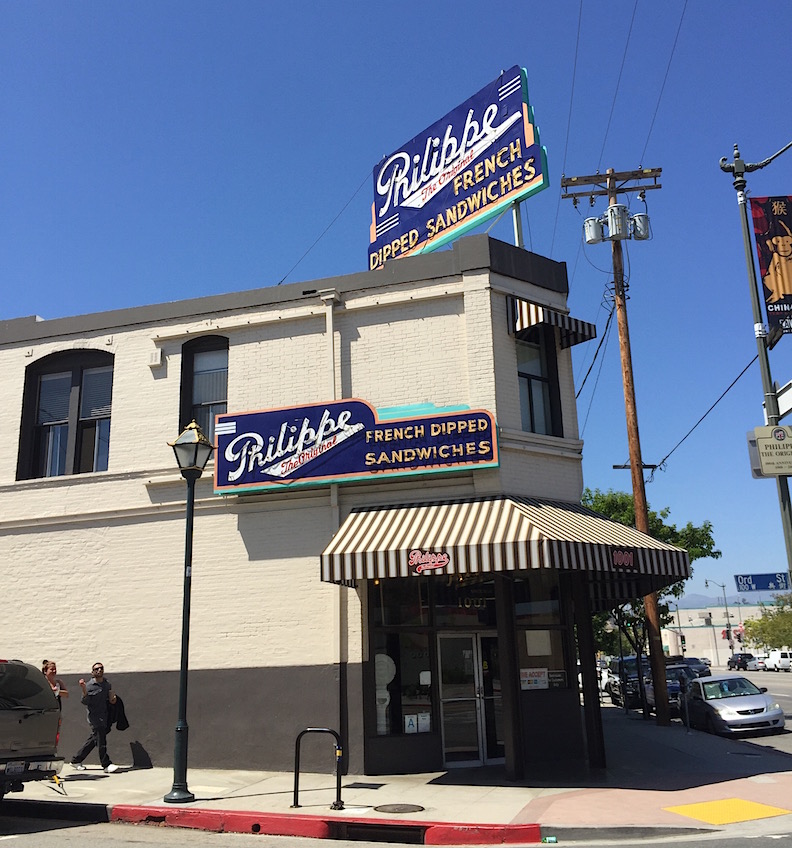 This is
what I come to L.A. for, not a rehash of fusion
food or something-for-everyone menus. I especially
don't travel four hours by car to get food that's
done just as well, if not better, in Las Vegas and
dozens of other cities in America. In this way are
these new chefs -- Neal Fraser at Redbird and Tim
Hollingsworth at Otium--missing the point? They
may be opening shiny new places to great fanfare,
but they're not doing anything personal and
they're not doing anything new. What they're doing
is food to please their investors, and it's all a
little sad.
This is
what I come to L.A. for, not a rehash of fusion
food or something-for-everyone menus. I especially
don't travel four hours by car to get food that's
done just as well, if not better, in Las Vegas and
dozens of other cities in America. In this way are
these new chefs -- Neal Fraser at Redbird and Tim
Hollingsworth at Otium--missing the point? They
may be opening shiny new places to great fanfare,
but they're not doing anything personal and
they're not doing anything new. What they're doing
is food to please their investors, and it's all a
little sad.
Am
I being overly harsh? I don't think so, especially
when you consider this work-in-progress that is
downtown Los Angeles has barely changed in half a
decade, while other cities like Washington D.C.,
Chicago, and Portland have been in full bloom. I
was full of hope and appetite as I saw the
skyline looming ahead of us a few weeks ago, but
after three days in L.A., we think our next visit
will be straight to Olvera Street for some tacos,
or straight to Philippe's or Wexler's
for a sandwich.
❖❖❖
EVERY
INCH THE CHEF, MICHEL RICHARD DIES AT 68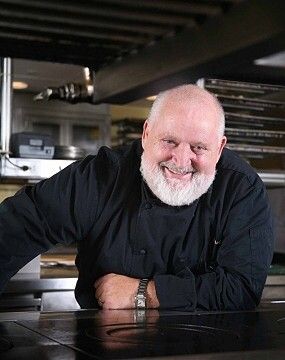
By
John Mariani
If ever there was a
prototypical French chef in America it was Michel
Richard. Large
as a wine barrel, with his wide-open blue eyes and
Santa Claus beard, Richard emanated the very
spirit of joie de vivre from a raspy tenor voice
that always seemed to have both laughter and
mischief in it.
Every inch the chef, he was beloved by his
colleagues and by so many young chefs who worked
with and learned from him. He died
yesterday at the age of 68 from complications of a
stroke.
Born in Brittany in 1948 and
raised in the Champagne region, Richard was
committed to being a cook at an early age and was
directed to learn pastry first, a discipline for
which he showed real talent. After
two years in the French army, he worked with the
greatest of all patîssiers, Gaston Lenôtre in
Paris, expanding the master’s reach to NYC before
Richard moved to Santa Fe, then, in 1977, to Los
Angeles, where he was immediately recognized as a
treasure in a town that had never before seen
anything like his pastry work.
After a grand tour of France’s
finest restaurants, Richard returned to L.A.
itching to open his own restaurant, which was to
be Citrus, in 1986, whose success begat offers to
bankroll several branches one after another; they
all failed. Leaving
L.A. in
1994, he opened Citronelle in Georgetown to great
acclaim and later a big boisterous bistro named
Central in Washington, DC. In 2013
he told the Washington Post, “The French are
doing well in New York. The rest of the country,
Los Angeles and San Francisco in particular, they
don’t like us anymore.” Nevertheless, his attempt at
bringing his particular French style to NYC’s
Palace Hotel received a poor reception and the
restaurant closed in 2014.
I first met Michel Richard when
he was at Citrus in L.A. and I, like everyone, was
enchanted with the man and his food, both of which
were irresistible and wholly free of Gallic
hauteur. His
cooking was lighter in some respects than
traditional French cuisine and plugged into the
breezy SoCal lifestyle of the day, though he
complained to me that so many people who came to
his restaurant just ordered a salad or steak.
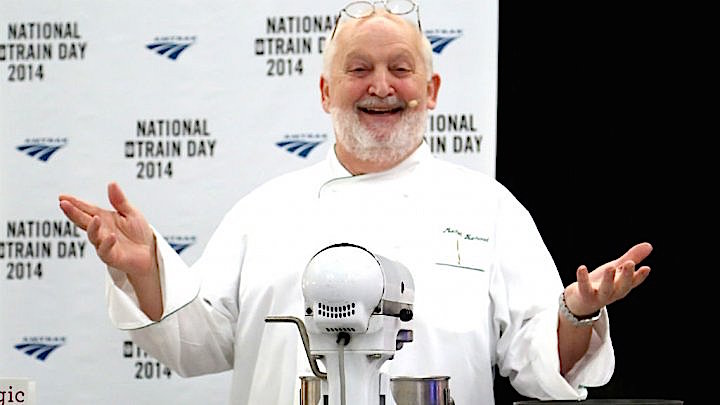 His cooking became
richer when he shifted to Georgetown—he once told
me he cooked his French fries in butter—and I have
fond memories of his halibut in a ginger emulsion,
his foie gras in a black bean mole sauce, and his “lemon egg-ceptional” dessert
crafted from white chocolate, lemon, and meringue.
His cooking became
richer when he shifted to Georgetown—he once told
me he cooked his French fries in butter—and I have
fond memories of his halibut in a ginger emulsion,
his foie gras in a black bean mole sauce, and his “lemon egg-ceptional” dessert
crafted from white chocolate, lemon, and meringue.
His food was stunning to look
at and seemed like sleight of hand, although he
was adamant that anything more than three or four
flavors in a dish were “too complicated for me to
understand,” a sentiment famed colleague
Jean-Georges Vongerichten echoed by saying that
Richard’s food “is very layered, but it is
simple and precise. He's very technical because he
was a pastry chef.''
What I
will remember most of all was Michel’s sense of
fun, a kind of winking wizardry in the dining room
that made an evening much more than a great meal.
His charisma was palpable, not least in the way he
rolled his Humpty-Dumpty frame into view,
impeccable in his chef’s whites, his eyes
suggesting he was up to something.
Yet what he was up to when he
was at his best was to provide his guests with a
culinary experience, not a rollercoaster ride of
heights and lows but a carousel of sheer delight.
In his training and commitment
to the rigors of French classic cuisine combined
with his enjoyment of American style and
open-mindedness, Michel Richard was a chef’s chef
and entirely his own man. He will
be very much missed by everyone who ever had the
pleasure of his company.
❖❖❖
By John Mariani
 MAMO
MAMO
323 West Broadway (near Canal Street)
646-964-4641
mamonyc.com
Entering
Mamo’s second floor dining room and knowing
that its antecedent is in Antibes on the
French Riviera, I saw immediately that the
owners had gotten everything just right for a
summer’s evening in Soho. Twilight
still stole through the windows and cast a
lovely glow on the white brick walls hung with
brightly colored Italian movie posters. The
leather chairs are among the most comfortable
in New York, and the waitstaff had both speed
and youthful charm on their side. And
when the food began to arrive, I felt that,
yes, I could easily be on the French Riviera
or Liguria tonight dining like this.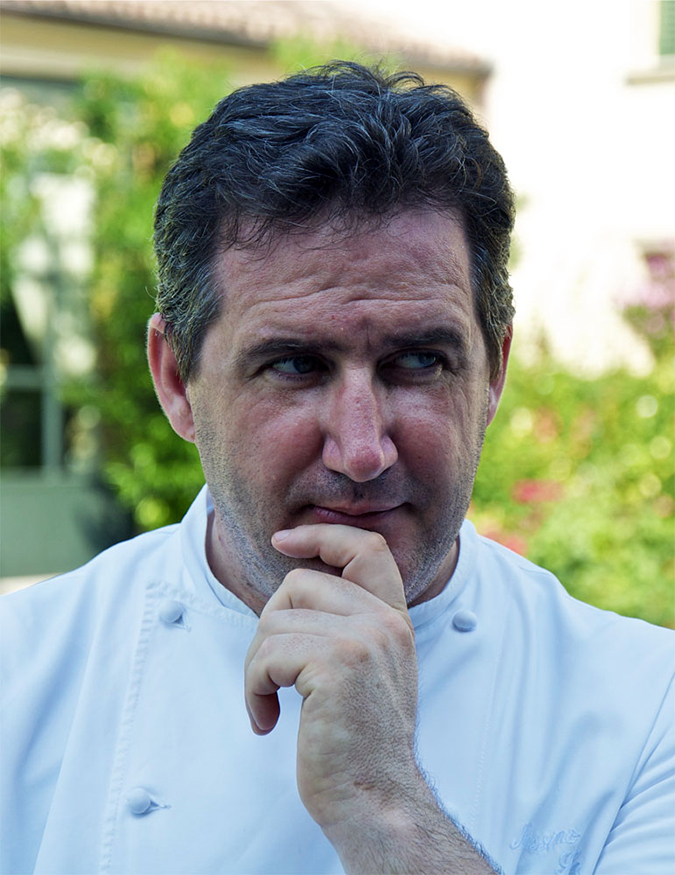
The original Mamo (appended
with the name Michelangelo) has for more than
twenty years been set in an ancient wine cave of
Domaine Ott, but with tables right up to the
shoreline outside, and it’s always been one of
the chic restaurants on the Riviera, with a
gallery of celebrity photos posted on its
website. The
NYC Mamo looks nothing like the French place,
but the menus are very similar, as are the wine
lists of French and Italian labels, though,
surprisingly, NYC’s list is more expensive than
Antibes’s.
There are precious few wines under $50 in
NYC; in Antibes a bottle of Ornellaia runs $335,
in NYC $480, and Col d’Orcia Brunello $97 versus
$115. (In a wine store these would cost,
respectively, about $170 and $40.)
Milan-born
Chef Massimo Sola (right) has managed to do so
many dishes so right despite a crushing number
of guests who may or may not know much about
authentic Italian food, like the correct
texture, called all’onda,
risotto should have. Since risotto needs 20
minutes to prepare from scratch, Sola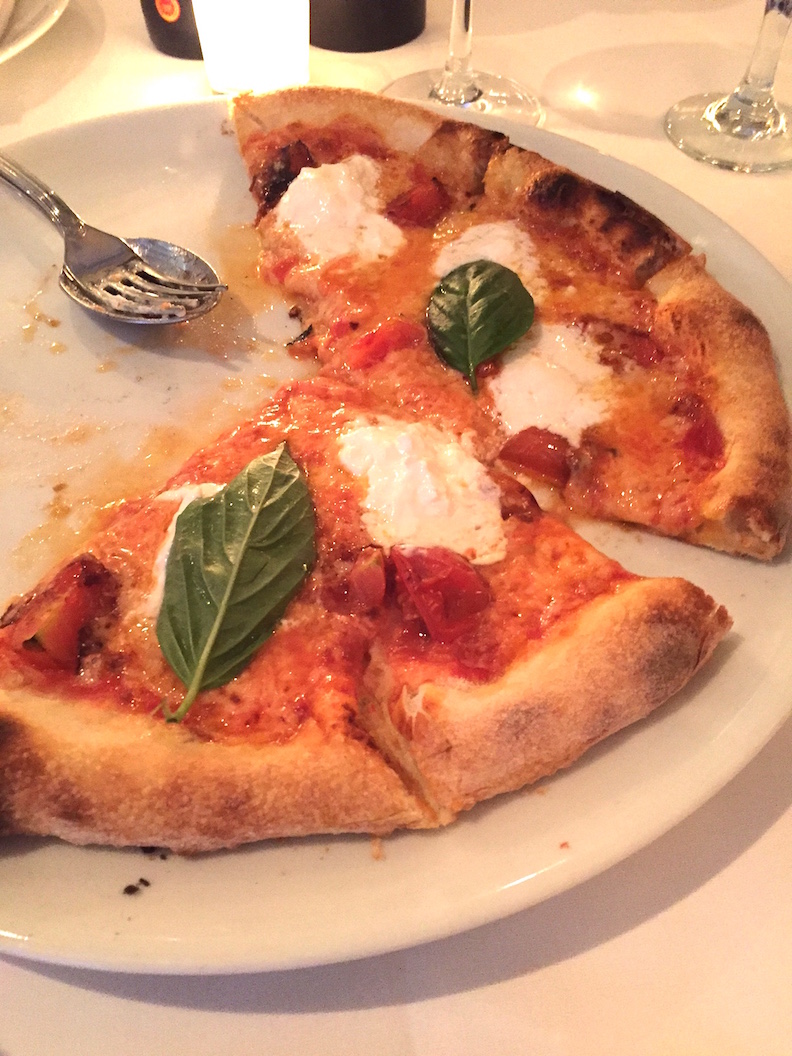 par-cooks the rice
and cuts the preparation time in half. The
tender, saffron-scented risotto with shreds of osso buco
($20) that I ate was easily one of the very best
I’ve had outside of Italy.
par-cooks the rice
and cuts the preparation time in half. The
tender, saffron-scented risotto with shreds of osso buco
($20) that I ate was easily one of the very best
I’ve had outside of Italy.
Right off the bat, the bread
and grissini
were very good, as was the olive oil on the
table. Mamo
offers four fairly traditional pizzas, and the
“Milano,” with Cantal cheese, burrata,
tomato, cherry tomatoes and basil (left), was
a winning combination; at $22 it’s not cheap but
it makes a good appetizer for four people. The
menu also has a pizza, as well as a number of
other items, with truffles, but at this time of
the year—before the black and white varieties
arrive in the fall—they’d be only inferior
summer truffles not worth ordering.
The full portions of pasta
($19-$27) are very hearty and may be split, not
least a hefty cut of lasagne
alla Bolognese, which, though it had more
tomato than a classic Bolognese should, was
rich, creamy and immensely satisfying. Spaghettoni
all’amatriciana was everything that
sumptuous Roman dish should be, with crispy
bacon, sweet tomato and assertive pecorino.
As is often the case in
Italian restaurants, main courses are kept at a
simpler level than what precedes them, so the
baby lamb chops ($42) called “scottadito”
(“burn your finger”) were just marinated then
grilled. You
don’t often see rabbit on NYC menus, so Mamo’s
stuffed rabbit rolls with spinach and foie gras
($44) were very welcome at our table and as good
as similar dishes I’ve had at French restaurants
around town.
Also unexpected was a rendering of Dover
sole crusted with Parmigiano cheese and a
caponata
of olives and peppers ($40). Usually
I’d protest anything but brown butter on
delicate Dover sole, but I must say that the
addition of the golden crust of cheese worked
remarkably well.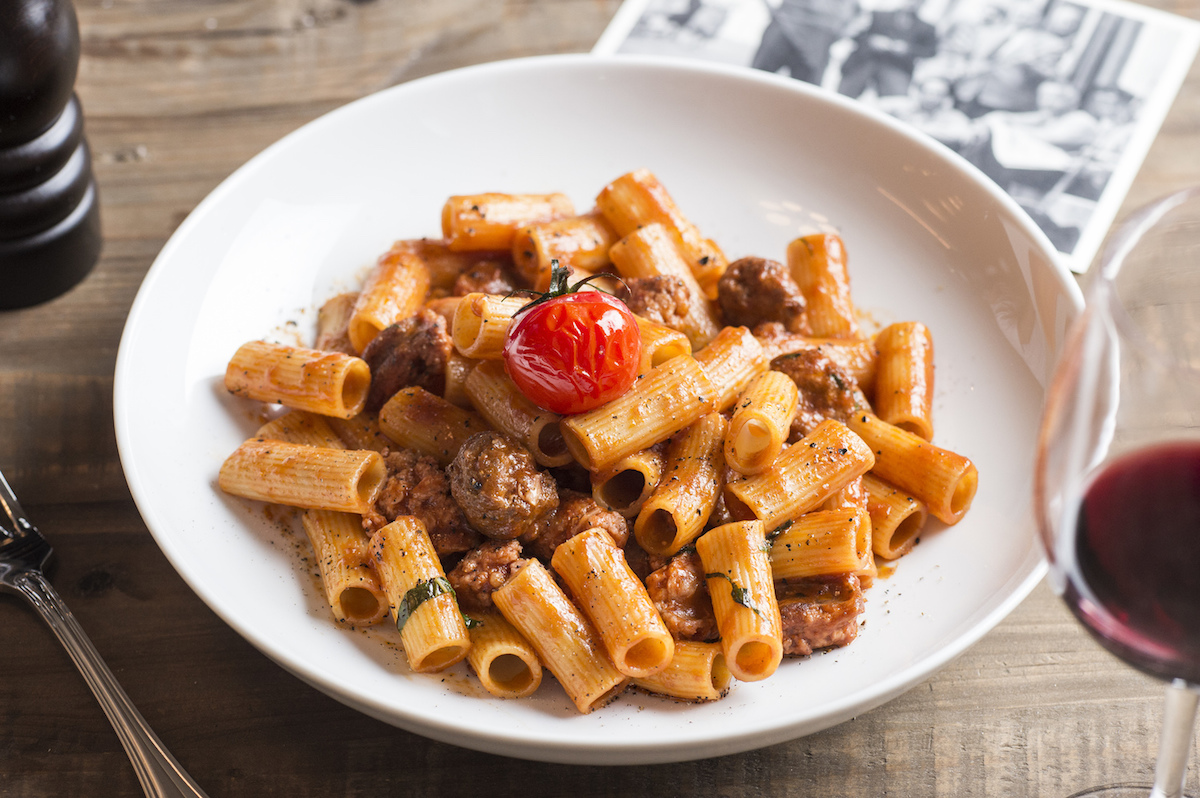
There are some standard
desserts ($9-$12)—chocolate mousse, cheesecake
(with lavender), and tiramisù—but
try the apple sponge cake with chocolate crème
anglaise for something different.
Sorry
to say, the enjoyment of my evening at Mamo was
curdled by how things developed after eight
o’clock. Having arrived at seven, we felt quite
blissful until the room filled up an hour later
and the noise level started to rise, heightened
by the booming of unidentifiable music that
forced everyone to speak—no, shout—louder and
louder just to be heard above the din. Simply
turning off the music—which no one
goes to Mamo to hear—would make for a far more
congenial ambiance, as would calling an
acoustical engineer to buffer the noise.
Otherwise, Mamo is serving
wonderfully authentic Italian food and doing so
with a conviviality not very different than you
might find back in Antibes.
Mamo is open for lunch
Mon.-Fri., dinner nightly and brunch Sat.
& Sun.
❖❖❖
By John Mariani

In
the world of wine, tradition has it that
less is more, that the smaller the estate
and more concentrated the effort in the
vineyards of Burgundy, Bordeaux, or Tuscany,
the better the wines will be. Of
course, that doesn’t wash in the greater
wine industry, especially at a time when
there is an enormous glut of wine out there
to market and unload.
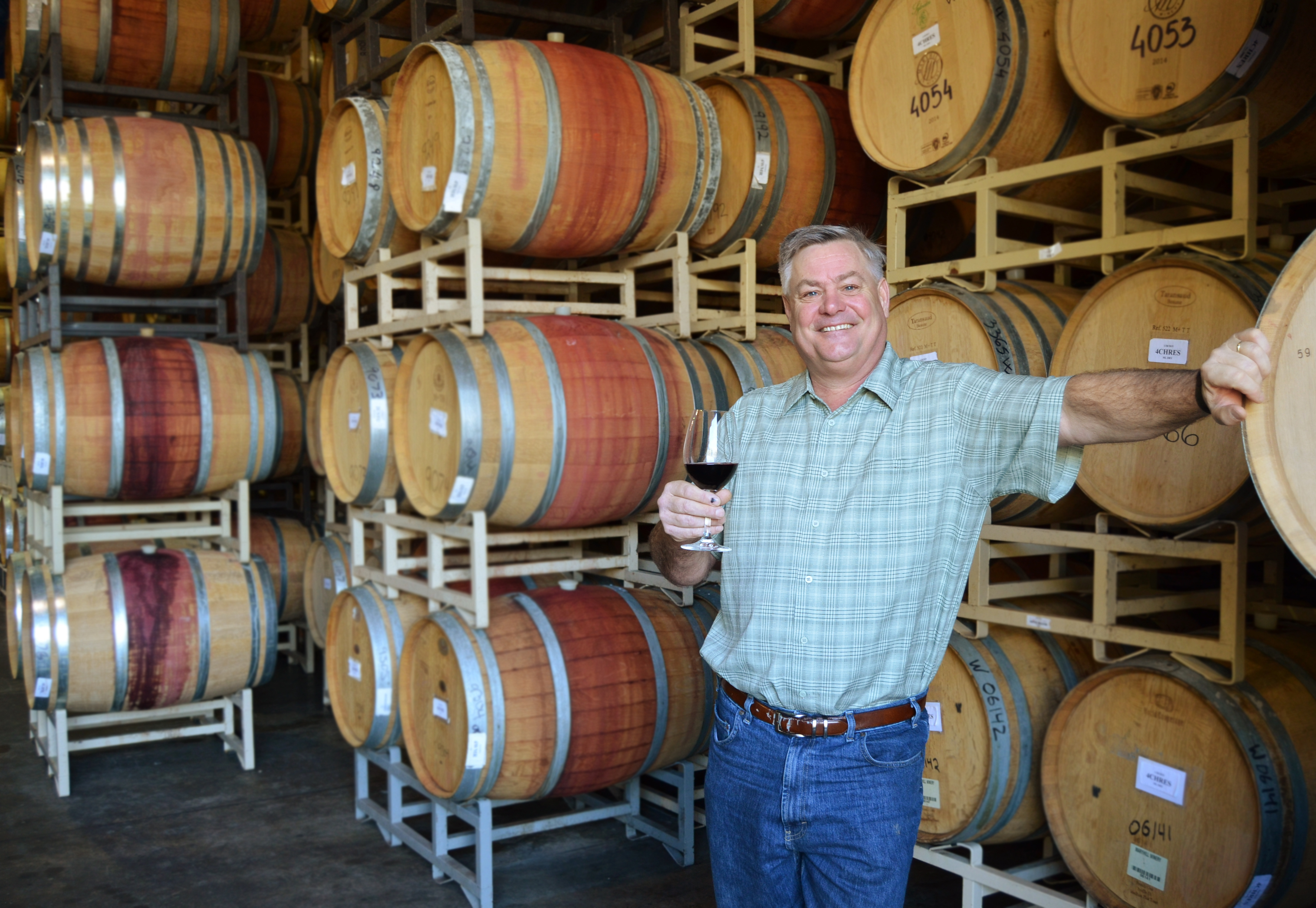 For both these reasons, large
wineries, and the companies that run them, may
make a variety of small estate bottlings, which
might total 10,000 bottles per vintage, in
addition to their more commercial wines that may
total 100,000 cases or more.
For both these reasons, large
wineries, and the companies that run them, may
make a variety of small estate bottlings, which
might total 10,000 bottles per vintage, in
addition to their more commercial wines that may
total 100,000 cases or more.
How to balance those two
approaches and still make well-regarded wines is
far from easy, but Craig Leuthold (left), owner
of Washington State’s award-winning Maryhill
Winery, seems to have been able to pull it off
with a conviction that has made him a leading
proponent of his state industry, with 890
wineries, 14 unique growing regions and more than
40 grape varietals grown. Maryhill,
founded in 1999,
alone makes up to 80,000 cases of 50
different wines from 30 varietals, sourced from
eight of the AVA regions. Each
year Maryhill’s tasting room in Goldendale gets
75,000 visitors, and the winery has become beloved
for its immensely successful summer concert series
in its 4,000-seat amphitheater (below). Its
wines have won more than 3,000 awards in
competition, including 2015 Pacific Northwest
winery of the year.
But enough statistics. The
winery’s name derives from 19th century California
pioneer Sam Hill and his wife, Mary, who built the
Maryhill Museum.
Craig
Leuthold hailed from Mercer Island
and worked in Spokane; he as a very successful
seller of plastic
raw materials, she in her family’s coffee
business. They dabbled in the wine business with
shares in a small estate named Cascade Cliffs.
“Once I smelled the first
harvest I was hooked,” Craig said over dinner in
New York. “Back then, there were only 130 wineries
in the state, now, fifteen years later, there are
more than 900.
We knew that we’d have to do volume—we
started out literally in a garage and our first
vintage was only 4,300 cases—and building a really
appealing visitors center was key to success.”
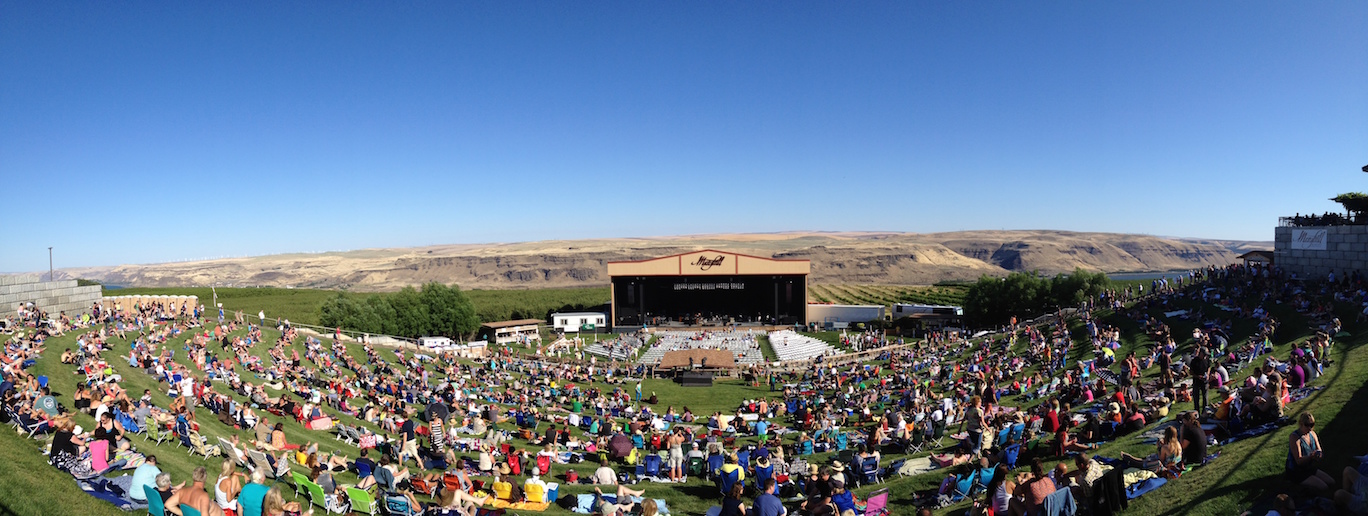 Now, with an 80,000-case
production, about a third is sold through the
tasting room, the winery’s club, and on the
internet, with the rest distributed for retail in
25 states. (By
comparison, the gorilla in the state is Chateau
Ste. Michelle, which produces two million cases
per year.)
Now, with an 80,000-case
production, about a third is sold through the
tasting room, the winery’s club, and on the
internet, with the rest distributed for retail in
25 states. (By
comparison, the gorilla in the state is Chateau
Ste. Michelle, which produces two million cases
per year.)
So avid
were the Leutholds in believing in the future of
Washington State as a viticultural region, they
have experimented with dozens of varietals—all of
them composed entirely of the grape on the
label—and prices are kept as low as possible.
“Our Viognier, which we make
7,000 cases of, is the darling of retailers,
selling for only $13,” Leuthold says proudly. “I myself
don’t like oaky Chardonnay and we never use oak
chips or powder, but people like the oak-rich
style, so we sell it.”
Most of Maryhill’s Bordeaux
varietals like Cabernet Franc, Cabernet Sauvignon,
Malbec and Merlot cost less than $26; whites like
Sauvignon Blanc, Gewürztraminer, Pinot Gris and
Semillon top out at about $16, with Proprietors
Reserve bottlings slightly higher.
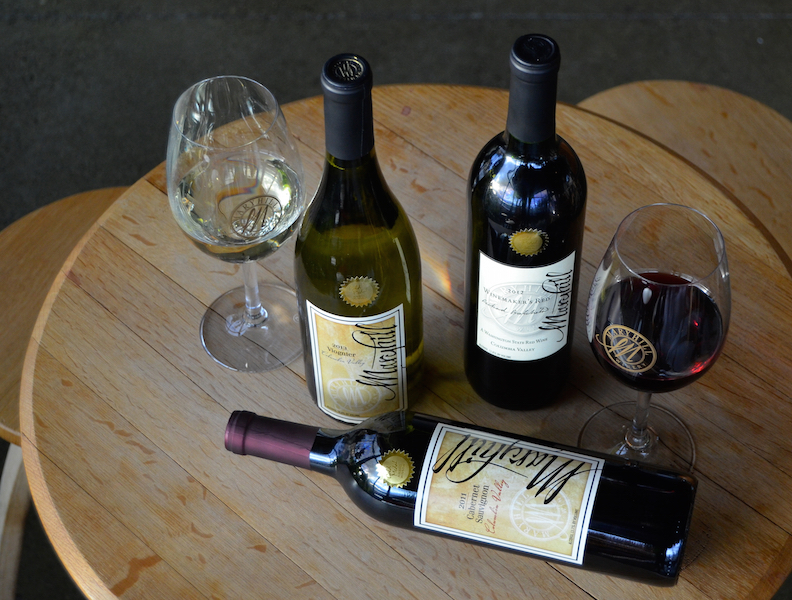 Today Maryhill is
producing 60 different wines, including an
excellent and quite refined 2012 Syrah ($26) at
14.4% alcohol, a varietal that usually needs
others blended in to give it balance and
complexity, but I found this to be a fine example
of what the Washington State terroir can produce
on its own.
The Albariño ($20), made from 60-year-old
vines, has a bolder flavor than most you’ll find
imported from Spain, and the warm 2015 vintage was
exceptional for the grape. Winemaker
Richard Batchelor used a slower, gentler press
cycle, as in Champagne, to preserve the fruit
character.
Today Maryhill is
producing 60 different wines, including an
excellent and quite refined 2012 Syrah ($26) at
14.4% alcohol, a varietal that usually needs
others blended in to give it balance and
complexity, but I found this to be a fine example
of what the Washington State terroir can produce
on its own.
The Albariño ($20), made from 60-year-old
vines, has a bolder flavor than most you’ll find
imported from Spain, and the warm 2015 vintage was
exceptional for the grape. Winemaker
Richard Batchelor used a slower, gentler press
cycle, as in Champagne, to preserve the fruit
character.
Owing to the scarcity of rain
in the Columbia Valley, all the 20 vineyards
sourced by Maryhill (which owns none of its own)
are irrigated, providing a dependable volume crop
every year.
“If we think the wine has a buyer, we’ll
make it,” says Leuthold, “and all our efforts have
proven just how diverse and adaptable the state’s
terroirs can be.
Our winemaker works closely with all the
growers, listening to what they have and telling
them what we want.”
It might be assumed that
Leuthold is more of an entrepreneur than a
viniculturist and that would largely be true, even
though most West Coast wineries buy grapes from
surrounding vineyards. Given Maryhill’s current
size, a lot of tonnage is needed but a lot of
finesse and caution go into the production at
their winery.
“If we make it, they will come,” says
Leuthold, “or so far it’s been that way.” He’ll
even help design a special label for his
customers, with a two-case minimum.
Given the kinds of awards Maryhill
has won both nationally and internationally,
including Winery of the Year in the 2014 San
Francisco International Wine Competition, Top 10
Winery of the World from the World Association of
Wine Writers and Journalists in 2014 and Seattle
magazine’s pick as Best Destination Winery,
Leuthold has proven that if bigger is not always
better, bigger can compete at quality levels
usually reserved for smaller, more prestigious
estates. And
that comes from an abiding belief in the territory
Leuthold so dearly loves.
 DUMB-DA-DUMB-DUMB--DUMB!
DUMB-DA-DUMB-DUMB--DUMB!
Two dumb
outlaws tried robbing a French McDonald's, firing a
shotgun into the air, and demanding staff hand over the
eatery's money, all the while being observed 11 off-duty
members of the French special forces team Groupe
d'Intervention de la Gendarmerie Nationale, who waited
for the men to exit, to "avoid any collateral
bloodshed," then gave short chase. The first robber
tripped as he ran and the second pointed his gun
at the trained men and was shot in the stomach.
RESTAURANT
REVIEWING 101: 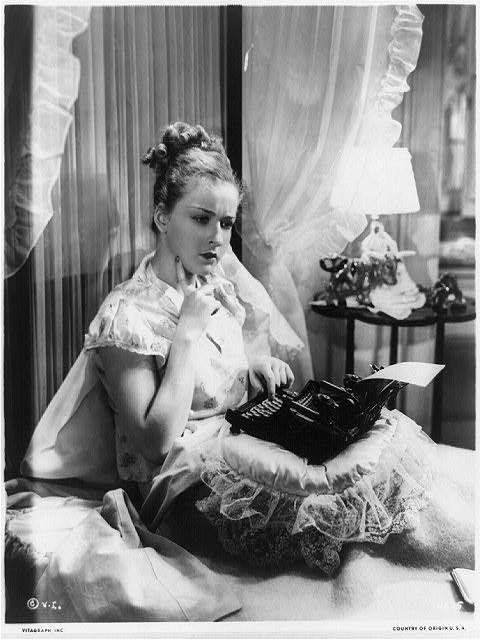
Do Not Spend 230 Words Getting Around to Your
Subject.
“In another
life, I was Italian, by marriage and stomach. All week,
I would look forward to Sunday dinners, which were an
all-day affair full of conversation, wine, and more food
than I could and should eat. Sometimes dinner would be
braciole, other days it would be hand-rolled gnocchi
(sometimes both). But the best days were when I’d come
over and be greeted by the smell of red sauce that had
been simmering all day on the stove. I’d wait
impatiently to dig into that savory red sauce teeming
with pork ribs and meatballs. These
days I’m no longer Italian by marriage, but I kept
the stomach for from-scratch Italian food.
"It seems that there are two extremes
of Italian cuisine in metro Detroit. There’s the
familiar Italian-American fare (e.g. chicken parmigiana
drowning in cheese or spaghetti with unlimited
breadsticks and salad). On the other end of the
spectrum, there’s the high-end Italian restaurant, the
kind of place you go to only when it’s your birthday or
your significant other messed up and they’re apologizing
through dinner.But sometimes you just want a glass of
wine and a bowl of meatballs with homemade bread. The
long-awaited restaurant from Supino Pizzeria owner Dave
Mancini, La Rondinella is the place for just that. A
cool, casual neighborhood joint, it’s perfect for
grabbing drinks at happy hour or celebrating a special
occasion (apology dinners still applicable).”—Dorothy
Hernandez, “Sunday Dinner, Five Days a Week,” Hour Detroit
(7/5/16)
Any of John Mariani's books below may be ordered from amazon.com.
 The
Hound in Heaven (21st Century Lion Books)
is a novella, and for anyone who loves dogs,
Christmas, romance, inspiration, even the supernatural, I
hope you'll find this to be a treasured favorite.
The story concerns how, after a New England teacher,
his wife and their two daughters adopt a stray puppy found
in their barn in northern Maine, their lives seem full of
promise. But when tragedy strikes, their wonderful dog
Lazarus and the spirit of Christmas are the only things
that may bring his master back from the edge of
despair.
The
Hound in Heaven (21st Century Lion Books)
is a novella, and for anyone who loves dogs,
Christmas, romance, inspiration, even the supernatural, I
hope you'll find this to be a treasured favorite.
The story concerns how, after a New England teacher,
his wife and their two daughters adopt a stray puppy found
in their barn in northern Maine, their lives seem full of
promise. But when tragedy strikes, their wonderful dog
Lazarus and the spirit of Christmas are the only things
that may bring his master back from the edge of
despair. WATCH THE VIDEO!
“What a huge surprise turn this story took! I was completely stunned! I truly enjoyed this book and its message.” – Actress Ali MacGraw
“He had me at Page One. The amount of heart, human insight, soul searching, and deft literary strength that John Mariani pours into this airtight novella is vertigo-inducing. Perhaps ‘wow’ would be the best comment.” – James Dalessandro, author of Bohemian Heart and 1906.
“John Mariani’s Hound in Heaven starts with a well-painted portrayal of an American family, along with the requisite dog. A surprise event flips the action of the novel and captures us for a voyage leading to a hopeful and heart-warming message. A page turning, one sitting read, it’s the perfect antidote for the winter and promotion of holiday celebration.” – Ann Pearlman, author of The Christmas Cookie Club and A Gift for my Sister.
“John Mariani’s concise, achingly beautiful novella pulls a literary rabbit out of a hat – a mash-up of the cosmic and the intimate, the tragic and the heart-warming – a Christmas tale for all ages, and all faiths. Read it to your children, read it to yourself… but read it. Early and often. Highly recommended.” – Jay Bonansinga, New York Times bestselling author of Pinkerton’s War, The Sinking of The Eastland, and The Walking Dead: The Road To Woodbury.
“Amazing things happen when you open your heart to an animal. The Hound in Heaven delivers a powerful story of healing that is forged in the spiritual relationship between a man and his best friend. The book brings a message of hope that can enrich our images of family, love, and loss.” – Dr. Barbara Royal, author of The Royal Treatment.
 |
The Encyclopedia of American Food and Drink by John F. Mariani (Bloomsbury USA, $35) Modesty forbids me to praise my own new book, but let me proudly say that it is an extensive revision of the 4th edition that appeared more than a decade ago, before locavores, molecular cuisine, modernist cuisine, the Food Network and so much more, now included. Word origins have been completely updated, as have per capita consumption and production stats. Most important, for the first time since publication in the 1980s, the book includes more than 100 biographies of Americans who have changed the way we cook, eat and drink -- from Fannie Farmer and Julia Child to Robert Mondavi and Thomas Keller. "This book is amazing! It has entries for everything from `abalone' to `zwieback,' plus more than 500 recipes for classic American dishes and drinks."--Devra First, The Boston Globe. "Much needed in any kitchen library."--Bon Appetit. |
"Eating Italian will never be the same after reading John Mariani's entertaining and savory gastronomical history of the cuisine of Italy and how it won over appetites worldwide. . . . This book is such a tasteful narrative that it will literally make you hungry for Italian food and arouse your appetite for gastronomical history."--Don Oldenburg, USA Today. "Italian
restaurants--some good, some glitzy--far
outnumber their French rivals. Many of
these establishments are zestfully described
in How Italian Food Conquered the World, an
entertaining and fact-filled chronicle by
food-and-wine correspondent John F.
Mariani."--Aram Bakshian Jr., Wall Street
Journal.
"Equal parts
history, sociology, gastronomy, and just
plain fun, How Italian Food Conquered the
World tells the captivating and delicious
story of the (let's face it) everybody's
favorite cuisine with clarity, verve and
more than one surprise."--Colman Andrews,
editorial director of The Daily
Meal.com. "A fantastic and fascinating
read, covering everything from the influence
of Venice's spice trade to the impact of
Italian immigrants in America and the
evolution of alta cucina. This book will
serve as a terrific resource to anyone
interested in the real story of Italian
food."--Mary Ann Esposito, host of PBS-TV's
Ciao
Italia. "John Mariani has written the
definitive history of how Italians won their
way into our hearts, minds, and
stomachs. It's a story of pleasure over
pomp and taste over technique."--Danny Meyer,
owner of NYC restaurants Union Square
Cafe, The Modern, and Maialino.
|
 |
 |
 |
 |
 |
 |
 |
 |
 Everett Potter's Travel Report:
Everett Potter's Travel Report: 
 Eating Las
Vegas JOHN CURTAS has been covering
the Las Vegas food and restaurant scene
since 1995. He is the co-author of EATING LAS
VEGAS – The 50 Essential Restaurants (the
fourth edition of which will be published in
early 2016), as well as the author of the Eating Las
Vegas web site: www.eatinglasvegas.
He can also be seen every Friday morning as
the “resident foodie” for Wake Up With the
Wagners on KSNV TV (NBC) Channel 3 in
Las Vegas.
Eating Las
Vegas JOHN CURTAS has been covering
the Las Vegas food and restaurant scene
since 1995. He is the co-author of EATING LAS
VEGAS – The 50 Essential Restaurants (the
fourth edition of which will be published in
early 2016), as well as the author of the Eating Las
Vegas web site: www.eatinglasvegas.
He can also be seen every Friday morning as
the “resident foodie” for Wake Up With the
Wagners on KSNV TV (NBC) Channel 3 in
Las Vegas.

MARIANI'S VIRTUAL GOURMET
NEWSLETTER is published weekly. Editor/Publisher: John
Mariani.
Editor: Walter Bagley. Contributing Writers: Christopher Mariani,
Robert Mariani, Misha
Mariani,
John A. Curtas, Edward Brivio, Mort Hochstein,
Andrew Chalk, Dotty Griffith and Brian Freedman. Contributing
Photographers: Galina Dargery, Bobby
Pirillo. Technical Advisor: Gerry McLoughlin.
To un-subscribe from this newsletter,click here.
© copyright John Mariani 2016

